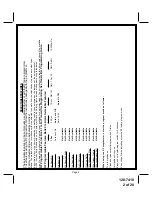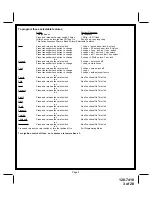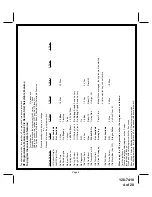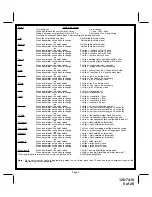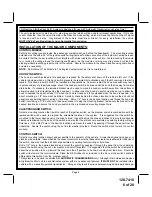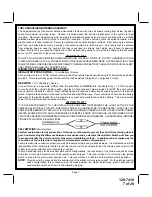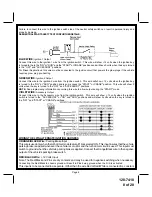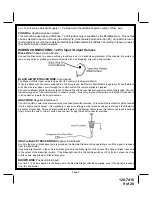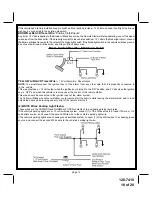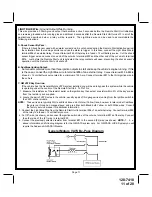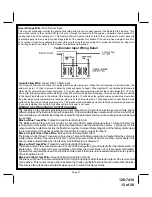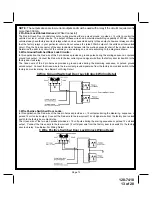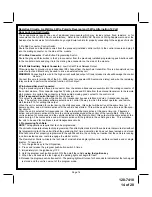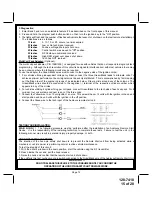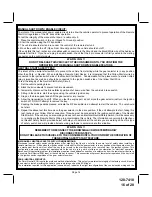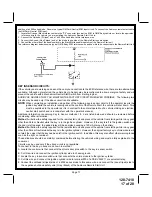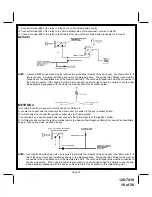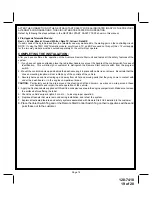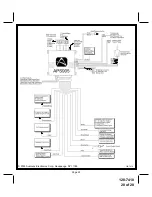
128-7410
14 of 20
Page 14
Resistive Circuits, As Well As 4 Wire Polarity Reversal and 5 Wire Alternating 12 Volt
Door Lock Control Circuits
These applications require the use of additional components which may include relays, fixed resistors, or for
convenience, the AS 9159 Door Lock Interface. Refer to the AUDIOVOX Door Lock Wiring Supplement and or the
Audiovox fax back service for information on your particular vehicle for properly connecting to these types of circuits.
2 Pin Red Connector: Control Switch
Route the black and black/white wires from the previously installed control switch to the control module and plug it
into the mating connector on the side of the module.
2 Pin Blue Connector : Push-Button Programming Switch
Route the gray and black wires in the 2 pin connector from the previously installed programming push-button switch
to the control module and plug it into the mating blue connector on the side of the module.
2 Pin White Auxiliary Output Connector : Low Current Trunk Release Output
This wire pulses to ground via an independent RF channel from the keychain transmitter. This is a transistorized, low
current output and should only be used to drive an external relay coil.
WARNING: Connecting this wire to the high current switched output of trunk release circuits will damage the control
module.
Connect this wire to terminal 86 of the AS - 9256 relay (or equivalent 30A automotive relay) and wire the remaining
relay contacts to perform the selected function of this output.
4 Pin Antenna/Receiver Connector:
Plug the previously routed three pin connector from the antenna transceiver assemble into the mating connector of
the control module. This connector supplies 12 volts, ground and RF data from the antenna transceiver to the remote
start module. Be certain this connector is firmly seated making good contact to the control unit.
2 Pin Transponder Control Output: (Yellow Connector)
This output is intended to allow the control of a transponder bypass interface module or transponder bypass
relay. The system also allows software selections to control the way in which this output operates, see remote
start feature # 10 for setting this output.
When the unit is selected for output during the start sequence, this output will be active at the same time Ign. 3
becomes active, and will remain active until the vehicle has started. This will be used for one time read transpon-
der circuits.
When the unit is selected for transponder on, this output will become active at the same time ign. 3 becomes
active, and will remain active all the time the unit is operational under the control of the remote start. When the
unit is selected for continuous and the vehicle is started via the Remote Start, this output will become active at the
same time ign. 3 becomes active and will remain active until the ignition in the vehicle goes low. This will allow
the unit to be used for continuous read transponders circuits.
2. Programming Tach Rate:
NOTE: All applications require that tach be programmed.
The unit will not operate unless tach is programmed. If an attempt is made to start the vehicle via the remote start without
first programming tach, the unit will flash the parking lights 7 times indicating tach has not been learned and stored.
If the tach rate is not properly programmed to the specific vehicle, the unit may not realize that the vehicle is running
in certain instances and could re-engage the starter motor.
The Remote Car Starter will learn the tach rate of most vehicles single ignition coils, multiple coil packs, and or single
injector. To learn tach;
1. Turn the ignition key to the ON position.
2. Press and release the program push-button switch 3 times.
3. Immediately turn the ignition key OFF.
4. Hold the program push-button switch ON, then start the vehicle using the ignition key.
5. When the unit senses the tach signal, the parking lights will begin to flash.
6. Release the program push-button switch. The parking lights will turn on for 3 seconds to indicate that the tach signal
is stored and the unit is now out of the program mode.


